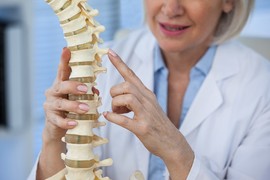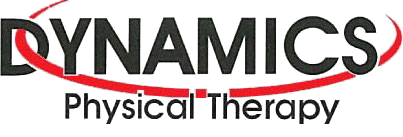Osteoporosis is a serious health problem that affects one in every three women, and one in every five men over the age of 50. Osteoporosis is a skeletal disorder that is characterized by the deterioration of bone tissue, low bone mass, increased bone fragility, and an increased risk of fracture.
 Osteoporosis is known as a silent disease, meaning that there are no warning signs or symptoms, until a fracture occurs. Osteoporotic fractures occur most commonly after a fall. About one third of individuals over the age of 65 suffer a fall each year.
Osteoporosis is known as a silent disease, meaning that there are no warning signs or symptoms, until a fracture occurs. Osteoporotic fractures occur most commonly after a fall. About one third of individuals over the age of 65 suffer a fall each year.
Hip fractures are one of the most serious types of fracture suffered by individuals with osteoporosis because both the loss of mobility and the surgery to correct a hip fracture can be associated with serious complications.
This is why health professionals, particularly physical therapists, focus on fall prevention strategies along with early detection and management. Much can be done to lower your risk of an osteoporotic fracture with diet, exercise, and medical management!
Standard care for the prevention and management of osteoporosis usually includes medication (if needed), supplementation with calcium and vitamin D, orthoses, exercise programs, and fall prevention techniques to help affected individuals maintain an optimal quality of life.
When looking at the prevention and management of osteoporosis in the rehabilitation setting, bone strength, muscular strength, aerobic capacity, and balance should be improved as they are directly linked to osteoporosis risk factors. The good news is, small lifestyle changes and a moderate regime of balance training and muscular conditioning can significantly reduce your likelihood of falls and fractures.
If you want to learn how to improve your bone health and help minimize your risk of suffering a devastating fall, you may benefit from physical therapy. A physical therapist will assess your muscles and joints, look at how you move, and explore not only your home environment, but also your work and leisure activities to determine possible risk factors for falls, and explore accessible ways to maximize your strength and conditioning.
Undergoing a comprehensive evaluation by a physical therapist at Dynamics Physical Therapy is one of the best ways to gain an understanding of how you can enhance your bone health. After the assessment, our physical therapists will create a program that is specific to your needs, and will help you minimize your risk of falling, and maximize your participation in life.
References
1. Shanb A, Youssef E. The impact of adding weight-bearing exercise versus nonweight bearing programs to the medical treatment of elderly patients with osteoporosis. Journal of Family and Community Medicine. 2014;21(3):176. doi:10.4103/2230-8229.142972.
2. Avoiding Falls | International Osteoporosis Foundation. Iofbonehealth.org. 2017. Available at: https://www.iofbonehealth.org/avoiding-falls. Accessed December 19, 2017.
3. Dionyssiotis Y, Skarantavos G, Papagelopoulos P. Modern Rehabilitation in Osteoporosis, Falls, and Fractures. Clinical Medicine Insights: Arthritis and Musculoskeletal Disorders. 2014;7:CMAMD.S14077. doi:10.4137/cmamd.s14077.
4. Exercises for healthy bones. Osteoporosis Canada. Osteoporosis.ca. 2017. Available at: https://osteoporosis.ca/bone-health-osteoporosis/exercises-for-healthy-bones/. Accessed December 19, 2017.


